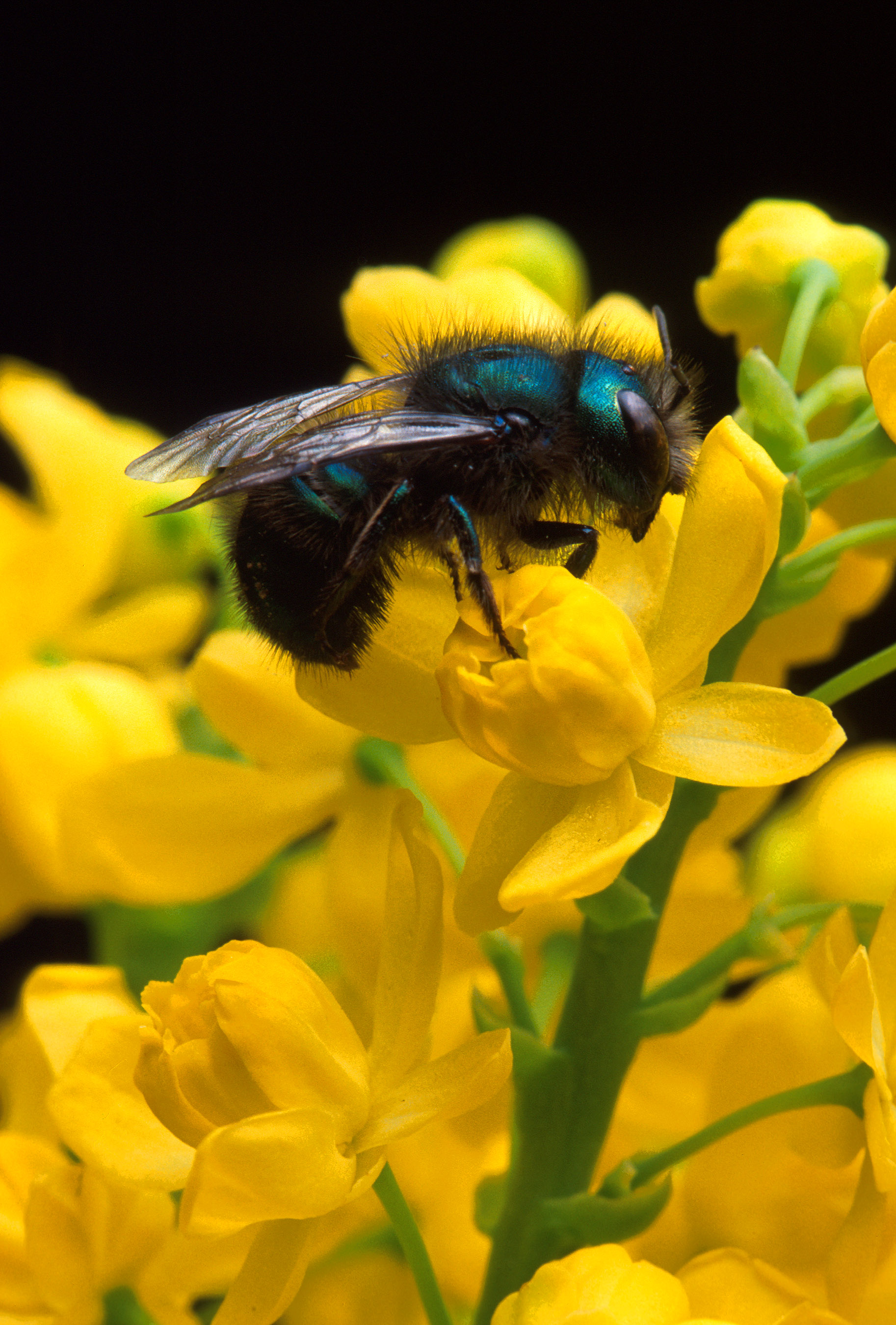 Environmental & Science Education
Environmental & Science EducationSTEM
Behavior
Biodiversity
Nature
Art and Environment
Edward Hessler
NPR's Gabriela Quiroz calls much deserved and needed attention to a solitary bee, opening a story about this little known critter by writing, While honeybees and their buzzing hives and hyper-fertile queens get all the press for pollinating our food supply, the hard-working blue orchard bee is one of 4,000 bee species native to North America that does its solitary work in relative obscurity. That is, until now.
And Quiroz includes a KQED video so you can see her in action. On screen, right here, a recent release starring the Blue Orchard Bee, a native pollinator. The nest is beautiful and it is tempting to think she "knows" this.
The bee, often referred to with the acronym BOB, may be seen here--three images: above, side and head-on (use the arrow). BOBs vary in degree of blueness, including a deep blue-black.
Efforts to manage the blue-orchard bee (Osmia lignaria) have proven difficult. A March 5, 2018 article in Scientific American reported that the world's largest almond grower just shut down an eight-year project to raise them to scale. Another problem is that they are not home-bodies and often fly away. Dan Nosowitz writing for the April 21 2017 Modern Farmer said this: Blue orchard bees might be excellent pollinators, but they're terrible employees. Nevertheless, research continues on BOBs as alternative pollinators.

 CGEE Student Voice
CGEE Student Voice
No comments:
Post a Comment